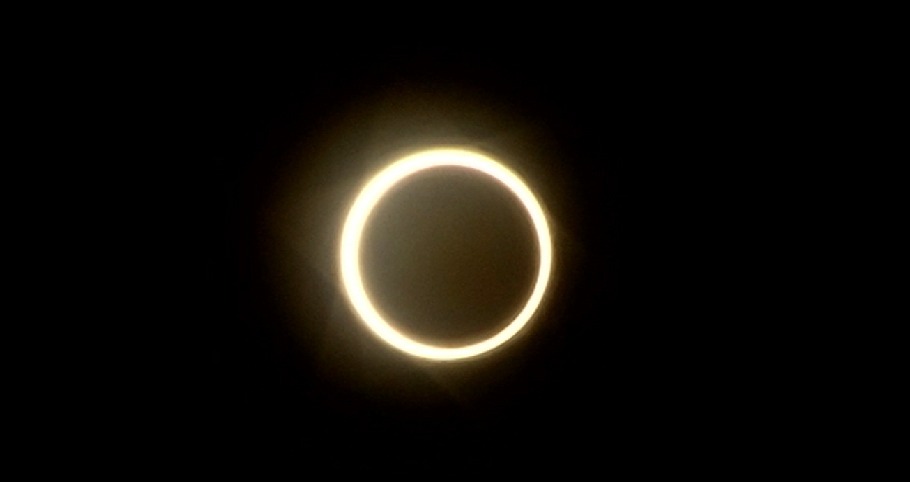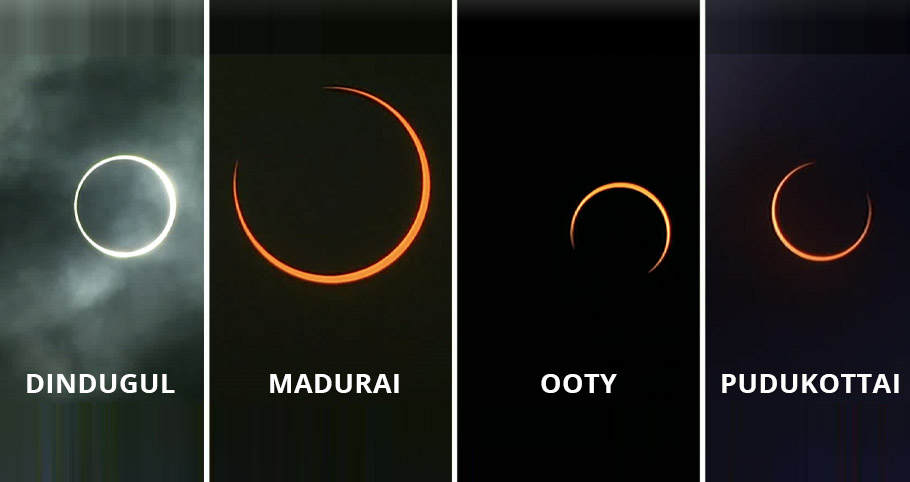
Millions across India witness the last celestial spectacle of 2019
The last celestial spectacle of 2019 is officially over. The annular solar eclipse, which began at 8:06 am with a partial eclipse, reached its maximum at 9:29 am on Thursday. The annularity lasted for 3 minutes 1 second and the partial eclipse ended at 11:11 am.

The last celestial spectacle of 2019 is officially over. The annular solar eclipse, which began at 8:06 am with a partial eclipse, reached its maximum at 9:29 am on Thursday (December 26). The annularity lasted for 3 minutes 1 second and the partial eclipse ended at 11:11 am.
The partial eclipse began at 8:04 am when the moon ‘touched’ the Sun’s edge and the annual phase started at 9:26 am. This was when the full eclipse was visible and the moon was the closest to the centre of the sun. By 9:27 am, the full eclipse ended. The moon left the sun’s edges by 11:05 am, thereby ending the partial eclipse.

Eclipses occur every year, but an annular solar eclipse are not seen too often. A solar eclipse occurs on a new moon day when the moon comes between the earth and the sun and when all three are aligned. An annular solar eclipse takes place when the moon’s apparent diameter is smaller than that of the sun’s and blocks most of the Sun’s light. This causes the Sun to look like a ring (annulus) of fire.
The spectacle was seen from parts of Kerala, Karnataka and Tamil Nadu, other parts of the country as well, though the best views were from down south. In Delhi, cloud cover meant only a partial glimpse at the eclipse.
Also watch | A timelapse of solar eclipse in Dubai
The rare spectacle was first visible from Cheruvathur in Kerala’s Kasaragod. It was also seen from Kozhikode and Kannur. In neighbouring Tamil Nadu, the eclipse was visible to people living in Chennai, Trichy, Ooty and Madurai, even as reports reaching from Coimbatore and Erode said cloud cover in that region hampered visibility.
Generally, solar eclipses occur twice a year, but for a tiny hamlet named Avinashi in Tamil Nadu’s Tirupur district, the next eclipse will be visible only after 300 years. The path followed by this eclipse across Tamil Nadu will repeat next only in 2031.

This annular solar eclipse was also reportedly visible from Saudi Arabia, Qatar, UAE, Oman, Sri Lanka, Malaysia, Indonesia, Singapore, Northern Mariana Islands, and Guam.
Prime Minister Narendra Modi posted his pictures of trying to see the rare spectacle on Thursday but said he could not witness the eclipse due to cloud cover in the national capital. However, he said he managed to have a glimpse of it in Kerala’s Kozhikode through live stream.
Like many Indians, I was enthusiastic about #solareclipse2019.
Unfortunately, I could not see the Sun due to cloud cover but I did catch glimpses of the eclipse in Kozhikode and other parts on live stream. Also enriched my knowledge on the subject by interacting with experts. pic.twitter.com/EI1dcIWRIz
— Narendra Modi (@narendramodi) December 26, 2019
“Like many Indians, I was enthusiastic about #solareclipse2019. Unfortunately, I could not see the sun due to cloud cover but I did catch glimpses of the eclipse in Kozhikode and other parts on live stream,” he wrote on Twitter.
Millions of enthusiastic people witnessed the last solar spectacle of the year across the country whereas hundreds of devotees paid obeisance at temples over religious beliefs.
In Uttar Pradesh’s Mathura, devotees paid obeisance at Dwarkadheesh temple and other temples of the Vallabh Kul sect while all other temples remained closed during the solar eclipse. Braving freezing cold, thousands of pilgrims took a holy dip in the Yamuna after the completion of solar eclipse.

Similarly, in Haryana’s Kurukshetra, a large number of devotees took a dip in the Brahma Sarovar on the occasion of solar eclipse, braving an intense cold weather.
In Kerala, various temples, including the famous Sabarimala Lord Ayyappa Temple, Padmanabha Swamy temple at Thiruvananthapuram and the Lord Krishna temple at Guruvayur, were closed during the solar eclipse. They were opened after purification rites.
(With inputs from agencies)


